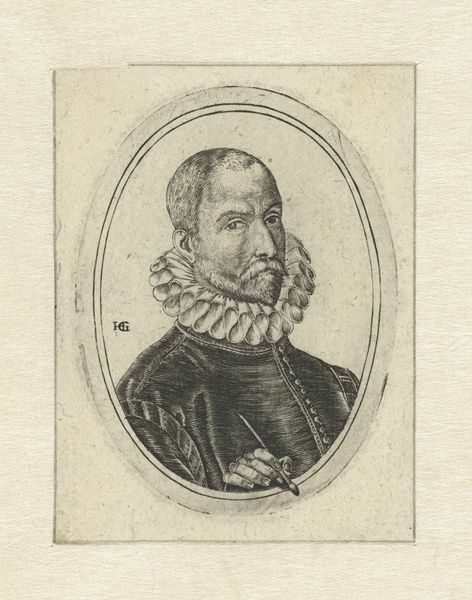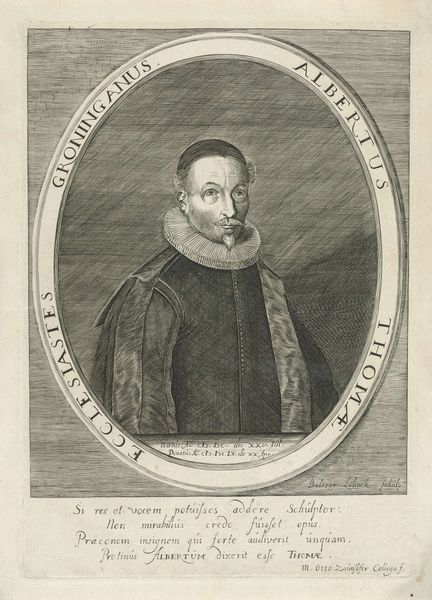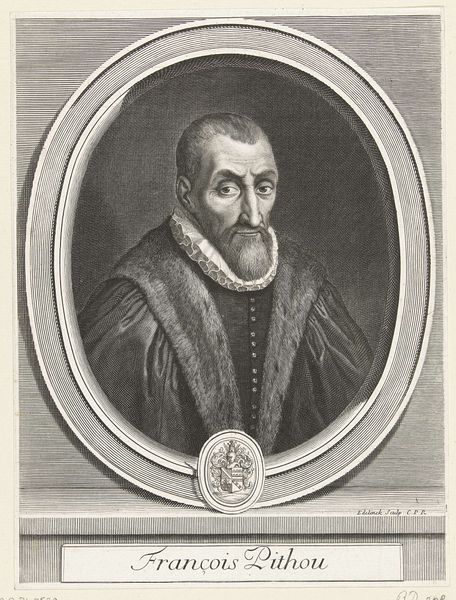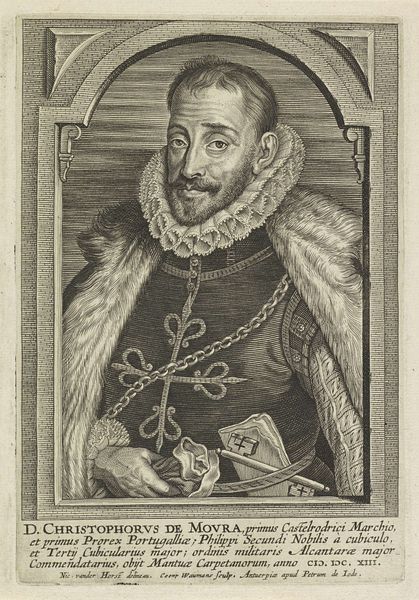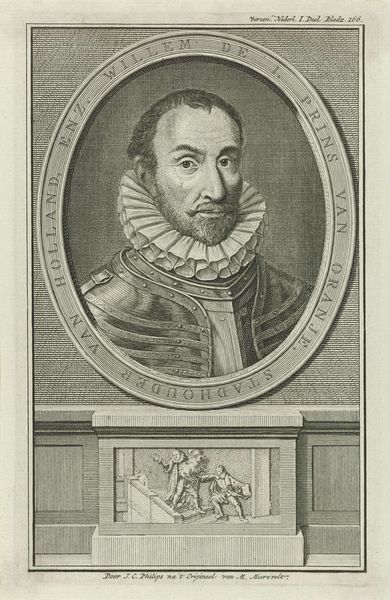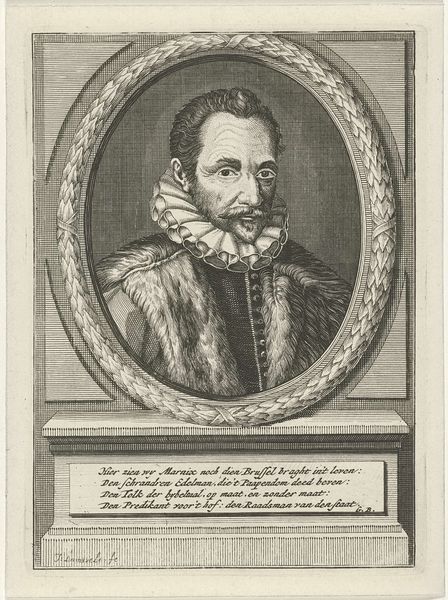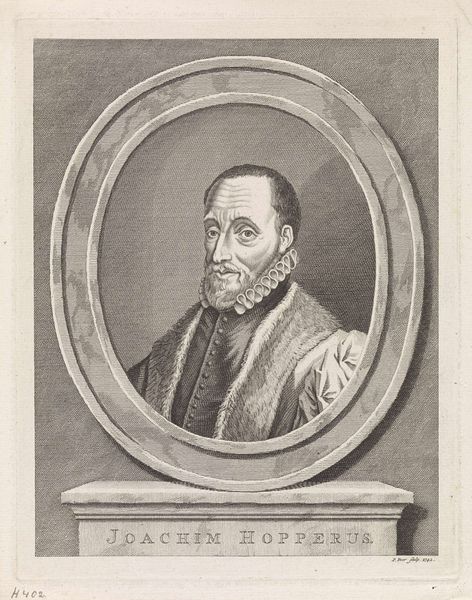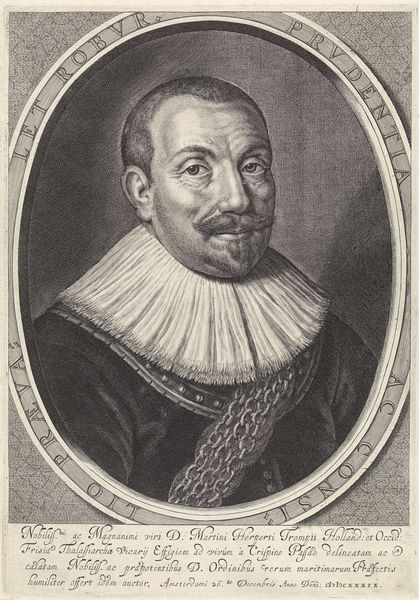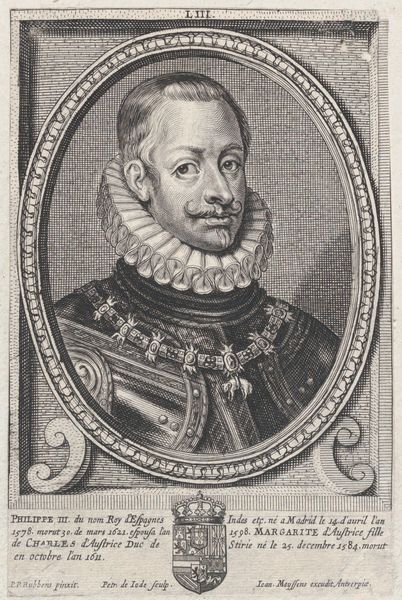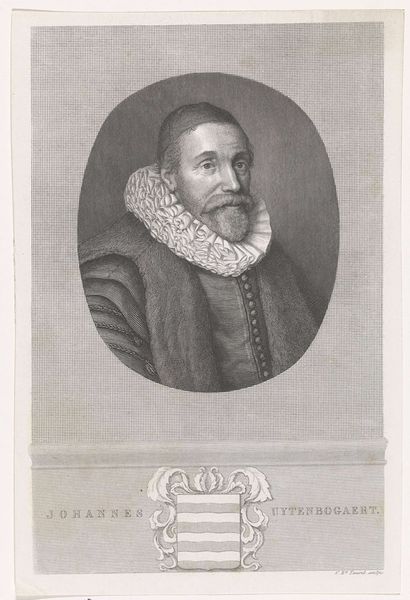
print, engraving
#
portrait
#
baroque
# print
#
old engraving style
#
figuration
#
line
#
engraving
Dimensions: height 315 mm, width 181 mm
Copyright: Rijks Museum: Open Domain
Editor: So this is the "Portret van Francis Walsingham," an engraving by Pieter van Gunst, dating from somewhere between 1669 and 1731. It has an intriguing, almost theatrical feel to it, like it's capturing a powerful figure in a moment of presentation. How do you interpret this work in terms of its historical and cultural context? Curator: Theatrical is a good descriptor. It reminds us that images of political figures were carefully crafted performances, especially during periods of significant social and political upheaval. Walsingham was Elizabeth I’s spymaster, a figure shrouded in secrecy and intrigue. This print, appearing much later, plays into that legacy. Consider how this image reinforces power; who had access to these images, and what was the aim of such presentation? Editor: That's interesting, so the print is reinforcing an already existing narrative? What about the text at the bottom, and that almost grotesque mask below the portrait oval – what do they signify? Curator: The inscription and grotesque mask act as framing devices. The mask, often associated with the theater, speaks to Walsingham's role as a manipulator behind the scenes. Texts included on prints frequently celebrated their subject, placing them in a pantheon of noteworthy historical figures, or further clarified a person’s impact on the course of history. Think about who controlled these narratives. Did such texts simply reflect reality? Editor: It makes you wonder about the accessibility and control of information, even then. Thank you; I had been focused on its face value rather than its implications as social currency. Curator: Exactly! Considering the museum’s role in preserving and presenting these narratives, are we challenging old assumptions or simply perpetuating them? This analysis goes beyond what’s simply shown to whom it caters and impacts most.
Comments
No comments
Be the first to comment and join the conversation on the ultimate creative platform.
